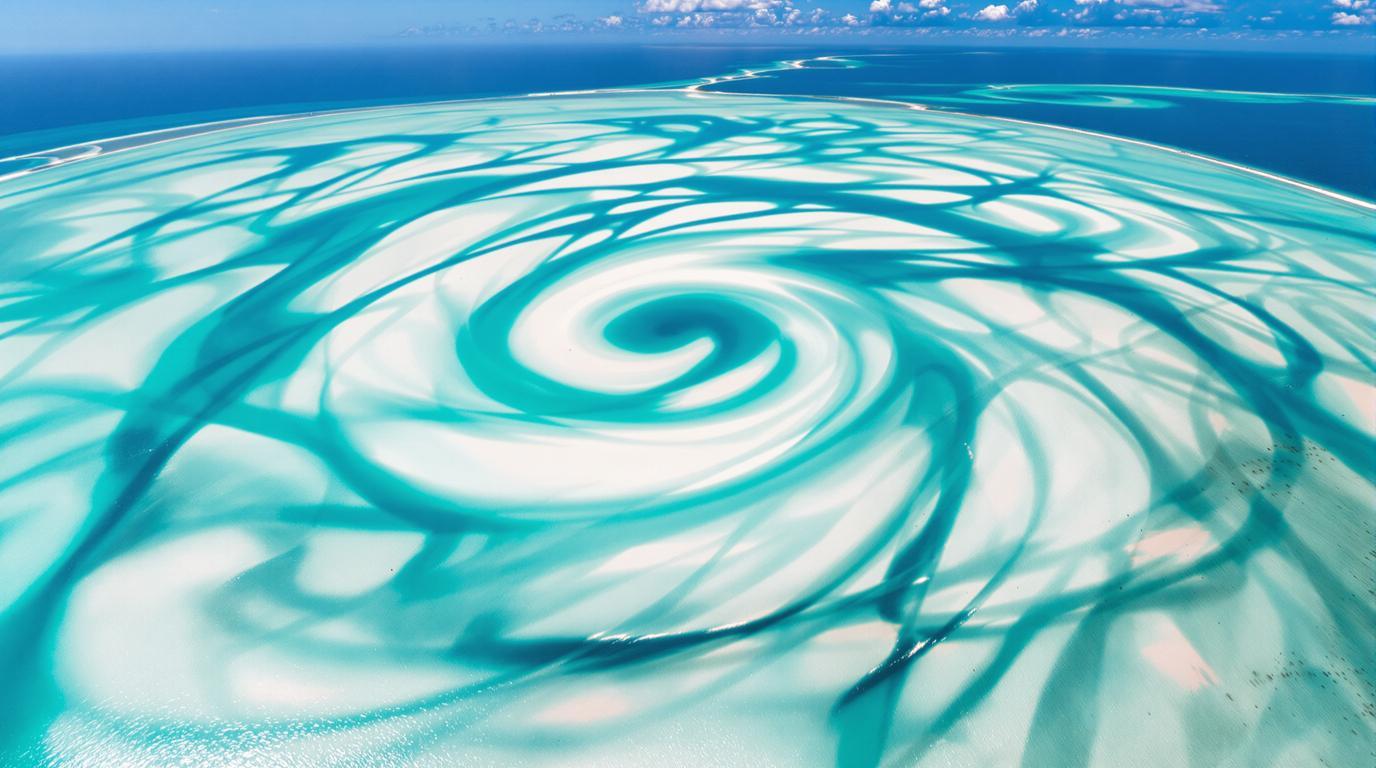Australia’s most spectacular tropical paradise isn’t where most travelers expect. Located at precisely 20.3000° S 148.9167° E off Queensland’s coast, the Whitsunday Islands and gateway town of Airlie Beach deliver a mesmerizing blend of pristine white beaches, turquoise waters, and rich marine ecosystems that rival anything in the South Pacific.
Paradise found: 74 islands of pure natural wonder
The Whitsunday archipelago encompasses 74 distinct islands, most uninhabited and protected as national parks. Their white silica sands, particularly at Whitehaven Beach, are among the purest in the world – so fine they can polish jewelry. Local tour guide James Wilson explains, “The sand here is 98% silica, creating that brilliant white color that visitors can’t believe is natural until they see it with their own eyes.”
The beach town that never sleeps
Airlie Beach serves as the perfect launching point for Whitsunday adventures. Despite its small population of just 1,312 residents, this coastal hub pulses with energy from dawn ferries departing to sunset cocktails along the Esplanade. The town’s centerpiece is its man-made swimming lagoon – a clever solution to the seasonal jellyfish that make ocean swimming hazardous during summer months.
Great Barrier Reef access like nowhere else
While many locations claim Great Barrier Reef access, the Whitsundays offer something truly special – fringing reefs accessible directly from island beaches. Unlike Rio’s iconic landmarks that require urban navigation, here you can step from powdery sand into vibrant underwater worlds teeming with over 1,500 fish species and 400 types of coral.
Whitehaven Beach: The swirling sands phenomenon
Consistently ranked among TripAdvisor’s top beaches globally, Whitehaven stretches over seven kilometers of coastline on Whitsunday Island. Its most photographed feature is Hill Inlet, where tidal shifts create mesmerizing swirls of turquoise water and white sand. Much like Venice’s golden hour spectacles, photographers recommend visiting during changing tides for the most dramatic patterns.
Island-hopping adventures for every budget
From affordable day trips to luxury sailing charters, the Whitsundays accommodate all travel styles. Hamilton Island offers upscale resorts, while Daydream Island features a living reef attraction where visitors can feed stingrays. Budget travelers can join group sailing tours, while those seeking seclusion can charter private vessels to explore hidden coves and beaches inaccessible by larger boats.
“The magic of the Whitsundays is how dramatically the landscapes change with the light throughout the day. Dawn at Whitehaven is a completely different experience than sunset at Airlie Beach – both equally stunning in their own way.” – Captain Sarah Jenkins, local sailing guide
Beyond beaches: Rainforest encounters
While marine activities dominate the Whitsundays experience, the region’s verdant rainforests offer a striking contrast to coastal scenery. Conway National Park features walking trails through ancient forests reminiscent of Egypt’s breathtaking stone forests, but with living eucalyptus giants instead of columns.
Culinary discoveries with oceanic views
Seafood dominates local menus, with coral trout and Moreton Bay bugs (a local lobster species) appearing on most restaurant offerings. For epicurean adventures similar to France’s innovative regional cuisines, try modern Australian fusion at Fish D’vine or waterfront dining at Hemingway’s.
Where golden light creates photographic magic
Like Kyoto’s Golden Temple, the Whitsundays have optimal viewing times. Professional photographer Emma Thompson advises: “Aerial views of Heart Reef and the swirling sands of Hill Inlet are most dramatic between 10am and 2pm when the sun is high enough to illuminate the waters without harsh shadows.”
When to visit: Seasonal secrets
September stands out as the ideal month to visit – offering warm temperatures (averaging 29°C), minimal rainfall, and reduced humidity. Stinger season runs November through May, when protective swimwear is recommended for ocean swimming. Whale watching season peaks from July to September when humpbacks migrate through the calm waters of the Whitsunday passage.
The Whitsundays aren’t just another beach destination – they’re Australia’s tropical masterpiece, where nature has crafted perfection through millions of years of geological artistry. Here, paradise isn’t an overstatement – it’s simply an accurate description.
